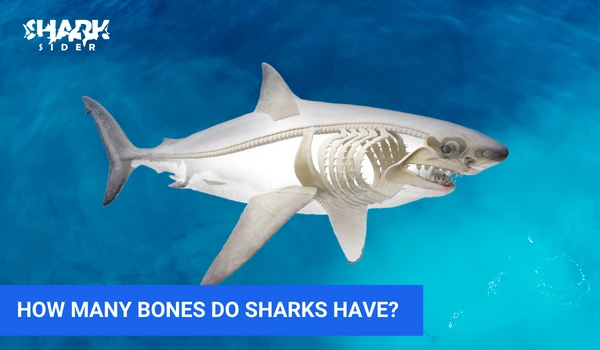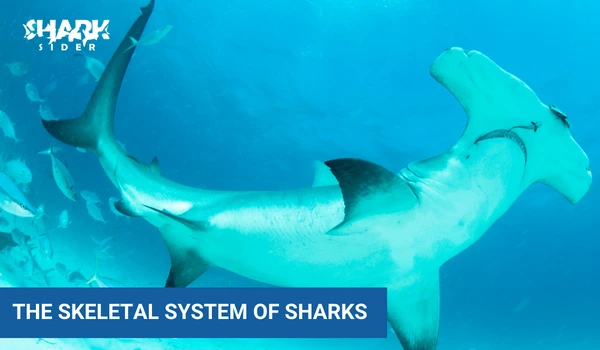Do you have a curious mind about the anatomy of sharks and an interest in their fascinating skeletal structure? Have you ever paused to consider how many bones do sharks have or what kinds of bones can be found among different species? If so, then this blog post is going to provide you with some intriguing answers that will further your knowledge of these incredible sea creatures. Keep reading to learn how many bones does sharks have in their body and other interesting information!
The skeletal system of sharks
Shark skeletons are composed of three main elements: the vertebral column, the pectoral girdle (also known as the shoulder girdle), and the pelvic girdle. Together, these components form a strong yet flexible base that allows sharks to swim easily and gracefully through the water. The vertebral column is made up of the vertebrae, which are interconnected and divided into five sections: the cervical (neck), thoracic (torso), lumbar (hips), caudal (tail), and anal region. The pectoral girdle is made up of two curved arches that attach to the vertebral column at its sides, while the pelvic girdle is composed of two hip bones that join the vertebral column to the tail fin.
What’s the difference between the cartilage and the bone of a shark?
As sharks don’t have bones, there is no comparison to be made between cartilage and bones in a shark’s body. Instead, the shark’s cartilage makes up much of its skeletal structure. This cartilage is less rigid and durable than bone but still provides support and flexibility. It is located between the vertebrae, reduces friction, protects nerve endings and acts as a shock absorber when sharks collide with objects in their environment.
How many bones do sharks have?

Sharks do not have bones in their skeletal system, instead, it is composed of cartilage. This is why they are referred to as having cartilage skeletons rather than bone skeletons. Each species of shark has a unique and varying number of cartilage structures, with the average being around 200-400. These structures include the vertebrae (around 100), the pectoral girdle (25-30), and the pelvic girdle (5-10). The exact number of cartilage structures may differ among shark species, with some having more vertebrae than others. For instance, the Great White shark has approximately 400 cartilage structures, while the Hammerhead shark has up to 550.
Why do some sharks have more or fewer bones?
Sharks evolved differently over time, and this is reflected in the number of bones (cartilages) found in each species. Sharks that evolved to be more agile and swift, such as the Great White shark, tend to have larger numbers of vertebrae (around 100). This allows them to move quickly through the water while still providing stability and flexibility. On the other hand, sharks that evolved to be slower but stronger swimmers like the Hammerhead shark have a larger number of bones (cartilages) to provide stability and strength in the water.
How do sharks live without bones?
Sharks don’t need bones like humans do to stand and move around. Instead, their unique skeletal system made of cartilage, including the backbones, provides the support they need while allowing them to be as flexible as possible in the water. This structure also helps reduce overall body weight so that sharks can swim faster and with more ease. The elasticity of the cartilage also makes it easier for sharks to bend and contort their bodies in order to navigate tight spaces.
Does the skeleton type of shark have a disadvantage?
The main disadvantage of the cartilaginous skeleton is that it does not provide as much protection from predators or other environmental factors as a bony structure would. Cartilage is more vulnerable to injury and damage, so sharks have to take extra care when swimming in dangerous waters. Additionally, cartilage does not have the same strength or durability as bone, meaning that sharks cannot use it as an effective weapon for self-defense. Despite this disadvantage, the cartilaginous skeleton of sharks is incredibly well-adapted to life in the water and enables these animals to thrive in a variety of aquatic habitats.
Conclusion
The skeletal system of sharks is quite different from that of other vertebrates, consisting primarily of a flexible cartilage structure instead of hard bone. The exact number of cartilages in a shark’s body can vary depending on the species, ranging from 200-400. Cartilage plays a crucial role for sharks as it serves to decrease friction, function as a shock absorber, and protect nerve endings. Although the cartilaginous skeleton of sharks has a minor disadvantage in terms of protection, it is well-suited to life in the water and allows these animals to thrive.

